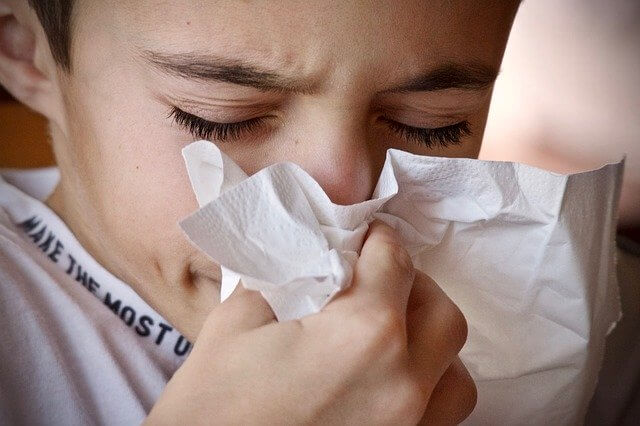We believe in professional growth of Physiotherapists with high technology!
Treat your Runny Nose (Rhinitis) with PEMF Therapy!

Rhinitis, also known as Common Cold or Coryza, is irritation and inflammation of the mucosal membrane inside the nose. The inflammation is caused by viruses, bacteria, irritants or allergens.
Common symptoms of Rhinitis:
- Stuffy and runny nose
- Itchiness in nose
- Sneezing
- Post nasal drip.
- Headache
- Toothache
- Ear ache
- Coughing
- Watery eyes
Pathophysiology of Rhinitis:
Most prominent pathological changes observed are replacement of ciliated columnar epithelial cells with goblet cells in the nasal mucous membrane. This results in mucin hypersecretion by goblet cells and decreased mucociliary activity.
Types of Rhinitis:
Rhinitis is categorized into three types:
- Infectious Rhinitis includes acute and chronic bacterial infections.
- Non Allergic Rhinitis includes vasomotor, idiopathic, hormonal, atrophic, occupational, gustatory rhinitis and drug induced rhinitis
- Allergic Rhinitis, triggered by pollen, mould, animal dander, dust, and other inhaled allergens.
Treatment of Rhinitis:
The following treatments can help avoid or treat symptoms of Rhinitis:
- Avoiding the substance that triggers the allergy.
- Nasal corticosteroid sprays.
- Antihistamines.
- Steaming / Humidification
- Saltwater solution flushed through the nose via a squeeze bottle or a bulb syringe.
- Desensitization injections
- Decongestants – for stuffiness
- Adequate rest and boost your immunity
- Breathing Exercises
- PEMF Therapy
Breathing Exercises for Rhinitis :
Deep inspiratory breathing exercises are important to maintain oxygen levels in the blood.
- Thoracic Expansion Exercises: In sitting/ Semi Fowler’s position, while you take a slow, long, deep breath in with your nose, take your shoulders up. Hold your breath for 2 to 5 seconds and as you exhale slowly, bring your shoulders down. Repeat this for 5 times.
- Diaphragmatic Breathing Exercises: In sitting/ Semi Fowler’s position, place your hand on your chest (on the upper abdominal region). Take a slow, deep breath in such that you are filling in air in the chest area just below your hand. Hold for 2 to 5 seconds and exhale gradually with your mouth. Repeat this for 5 times.

How does PEMF Therapy helps Rhinitis?
PEMF therapy sends out gentle low-pulse electromagnetic frequencies. It reduces sinus inflammation by increasing blood flow to deliver enough nutrients and oxygen to the sinuses. This accelerates cell repair process and new cells regrowth, which naturally restores the sinus to a normal condition. Nasal congestion reduces and further spread of inflammation is reduced. A good oxygen level and improved breathing ability ensures a deep sleep. This has a great influence on boosting our immunity. An increased level of nitric oxide helps the body to recover after exercise.
References:
Read More:
Boost Your Immunity with Physiotherapy
Antioxidants – A blessing to your body!








This blog provides a comprehensive overview of rhinitis, detailing its symptoms, types, and various treatment options. The inclusion of PEMF Therapy as a treatment option is particularly insightful, offering a modern approach to managing rhinitis by addressing inflammation and enhancing healing through electromagnetic frequencies. The explanations of how PEMF Therapy works to alleviate symptoms and support overall recovery are clear and well-articulated. Additionally, the detailed description of breathing exercises is a valuable addition, highlighting practical steps that can complement other treatments. Overall, the blog effectively combines traditional and innovative approaches to managing rhinitis, making it a valuable resource for those seeking relief and understanding of this common condition. Great job!